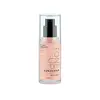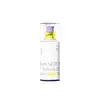What's inside
What's inside
 Key Ingredients
Key Ingredients

 Benefits
Benefits

 Concerns
Concerns

 Ingredients Side-by-side
Ingredients Side-by-side

Citrus Grandis Fruit Water 41%
MaskingDibutyl Adipate
EmollientWater
Skin ConditioningButylene Glycol
HumectantC12-15 Alkyl Benzoate
AntimicrobialIsoamyl P-Methoxycinnamate
UV AbsorberIsopentyldiol
HumectantCaprylic/Capric Triglyceride
MaskingDiethylamino Hydroxybenzoyl Hexyl Benzoate
UV FilterDiisostearyl Malate
EmollientBis-Ethylhexyloxyphenol Methoxyphenyl Triazine
Skin ConditioningTerephthalylidene Dicamphor Sulfonic Acid
UV AbsorberTitanium Dioxide
Cosmetic ColorantNiacinamide
SmoothingTromethamine
BufferingHydrogenated Poly(C6-20 Olefin)
Abrasive1,2-Hexanediol
Skin ConditioningHydroxyacetophenone
AntioxidantAcrylates/C10-30 Alkyl Acrylate Crosspolymer
Emulsion StabilisingDrometrizole Trisiloxane
UV AbsorberPolyhydroxystearic Acid
EmulsifyingHdi/Trimethylol Hexyllactone Crosspolymer
Parfum
MaskingLimonene
PerfumingLinalool
PerfumingCitric Acid
BufferingEthylhexylglycerin
Skin ConditioningPolyglyceryl-10 Laurate
Skin ConditioningPropanediol
SolventAlumina
AbrasiveTriethoxycaprylylsilane
Adenosine
Skin ConditioningCI 77491
Cosmetic ColorantRosa Rugosa Callus Culture Extract
AntimicrobialButyl Avocadate
Skin ConditioningSimmondsia Chinensis Seed Oil
EmollientSqualane
EmollientStomach Extract
HumectantTocopherol
AntioxidantBisabolol
MaskingFullerenes
AntimicrobialHydrolyzed Hyaluronic Acid
HumectantMaltodextrin
AbsorbentXylitylglucoside
HumectantAnhydroxylitol
HumectantXylitol
HumectantGlucose
HumectantSodium Citrate
BufferingCyanocobalamin
Skin ConditioningCitrus Grandis Fruit Water 41%, Dibutyl Adipate, Water, Butylene Glycol, C12-15 Alkyl Benzoate, Isoamyl P-Methoxycinnamate, Isopentyldiol, Caprylic/Capric Triglyceride, Diethylamino Hydroxybenzoyl Hexyl Benzoate, Diisostearyl Malate, Bis-Ethylhexyloxyphenol Methoxyphenyl Triazine, Terephthalylidene Dicamphor Sulfonic Acid, Titanium Dioxide, Niacinamide, Tromethamine, Hydrogenated Poly(C6-20 Olefin), 1,2-Hexanediol, Hydroxyacetophenone, Acrylates/C10-30 Alkyl Acrylate Crosspolymer, Drometrizole Trisiloxane, Polyhydroxystearic Acid, Hdi/Trimethylol Hexyllactone Crosspolymer, Parfum, Limonene, Linalool, Citric Acid, Ethylhexylglycerin, Polyglyceryl-10 Laurate, Propanediol, Alumina, Triethoxycaprylylsilane, Adenosine, CI 77491, Rosa Rugosa Callus Culture Extract, Butyl Avocadate, Simmondsia Chinensis Seed Oil, Squalane, Stomach Extract, Tocopherol, Bisabolol, Fullerenes, Hydrolyzed Hyaluronic Acid, Maltodextrin, Xylitylglucoside, Anhydroxylitol, Xylitol, Glucose, Sodium Citrate, Cyanocobalamin
Water
Skin ConditioningHomosalate
Skin ConditioningButylene Glycol
HumectantOctocrylene
UV AbsorberButyloctyl Salicylate
Skin ConditioningEthylhexyl Salicylate
UV AbsorberButyl Methoxydibenzoylmethane
UV AbsorberAlcohol Denat.
AntimicrobialMethyl Methacrylate Crosspolymer
1,2-Hexanediol
Skin ConditioningXylitol
HumectantPentylene Glycol
Skin ConditioningBenzotriazolyl Dodecyl P-Cresol
UV AbsorberDibutyl Lauroyl Glutamide
Skin ConditioningDibutyl Ethylhexanoyl Glutamide
Skin ConditioningSodium Acrylates Crosspolymer-2
AbsorbentEthylhexyl Methoxycrylene
Skin ConditioningC30-45 Alkyldimethylsilyl Polypropylsilsesquioxane
Caffeine
Skin ConditioningSodium Polyacryloyldimethyl Taurate
Emulsion StabilisingParfum
MaskingAmmonium Acryloyldimethyltaurate/Vp Copolymer
Polyacrylate Crosspolymer-6
Emulsion StabilisingSodium Hyaluronate
HumectantBiosaccharide Gum-1
HumectantSodium Phytate
Ethylhexylglycerin
Skin ConditioningCarnosine
Skin ConditioningWater, Homosalate, Butylene Glycol, Octocrylene, Butyloctyl Salicylate, Ethylhexyl Salicylate, Butyl Methoxydibenzoylmethane, Alcohol Denat., Methyl Methacrylate Crosspolymer, 1,2-Hexanediol, Xylitol, Pentylene Glycol, Benzotriazolyl Dodecyl P-Cresol, Dibutyl Lauroyl Glutamide, Dibutyl Ethylhexanoyl Glutamide, Sodium Acrylates Crosspolymer-2, Ethylhexyl Methoxycrylene, C30-45 Alkyldimethylsilyl Polypropylsilsesquioxane, Caffeine, Sodium Polyacryloyldimethyl Taurate, Parfum, Ammonium Acryloyldimethyltaurate/Vp Copolymer, Polyacrylate Crosspolymer-6, Sodium Hyaluronate, Biosaccharide Gum-1, Sodium Phytate, Ethylhexylglycerin, Carnosine
Ingredients Explained
These ingredients are found in both products.
Ingredients higher up in an ingredient list are typically present in a larger amount.
1,2-Hexanediol is a synthetic liquid and another multi-functional powerhouse.
It is a:
- Humectant, drawing moisture into the skin
- Emollient, helping to soften skin
- Solvent, dispersing and stabilizing formulas
- Preservative booster, enhancing the antimicrobial activity of other preservatives
Butylene Glycol (or BG) is used within cosmetic products for a few different reasons:
Overall, Butylene Glycol is a safe and well-rounded ingredient that works well with other ingredients.
Though this ingredient works well with most skin types, some people with sensitive skin may experience a reaction such as allergic rashes, closed comedones, or itchiness.
Learn more about Butylene GlycolEthylhexylglycerin (we can't pronounce this either) is commonly used as a preservative and skin softener. It is derived from glyceryl.
You might see Ethylhexylglycerin often paired with other preservatives such as phenoxyethanol. Ethylhexylglycerin has been found to increase the effectiveness of these other preservatives.
Parfum is a catch-all term for an ingredient or more that is used to give a scent to products.
Also called "fragrance", this ingredient can be a blend of hundreds of chemicals or plant oils. This means every product with "fragrance" or "parfum" in the ingredients list is a different mixture.
For instance, Habanolide is a proprietary trade name for a specific aroma chemical. When used as a fragrance ingredient in cosmetics, most aroma chemicals fall under the broad labeling category of “FRAGRANCE” or “PARFUM” according to EU and US regulations.
The term 'parfum' or 'fragrance' is not regulated in many countries. In many cases, it is up to the brand to define this term.
For instance, many brands choose to label themselves as "fragrance-free" because they are not using synthetic fragrances. However, their products may still contain ingredients such as essential oils that are considered a fragrance by INCI standards.
One example is Calendula flower extract. Calendula is an essential oil that still imparts a scent or 'fragrance'.
Depending on the blend, the ingredients in the mixture can cause allergies and sensitivities on the skin. Some ingredients that are known EU allergens include linalool and citronellol.
Parfum can also be used to mask or cover an unpleasant scent.
The bottom line is: not all fragrances/parfum/ingredients are created equally. If you are worried about fragrances, we recommend taking a closer look at an ingredient. And of course, we always recommend speaking with a professional.
Learn more about ParfumWater. It's the most common cosmetic ingredient of all. You'll usually see it at the top of ingredient lists, meaning that it makes up the largest part of the product.
So why is it so popular? Water most often acts as a solvent - this means that it helps dissolve other ingredients into the formulation.
You'll also recognize water as that liquid we all need to stay alive. If you see this, drink a glass of water. Stay hydrated!
Learn more about WaterXylitol is a humectant and prebiotic. It can help with dry skin.
In studies, xylitol has been shown to improve dry skin. It decreased transepidermal water loss, or when water passes through the skin and evaporates. Xylitol also showed to help improve the biomechanical properties of the skin barrier.
The prebiotic property of xylitol may also help reinforce our skin's natural microbiome. Having a healthy microbiome prevents infection by bad bacteria and helps with hydration.
As a humectant, Xylitol helps draw moisture from both the air and from deeper skin layers. This helps keep skin hydrated.
Xylitol is a sugar alcohol and commonly used as a sugar substitute. It is naturally occurring in plants such as strawberries and pumpkin.
Learn more about Xylitol